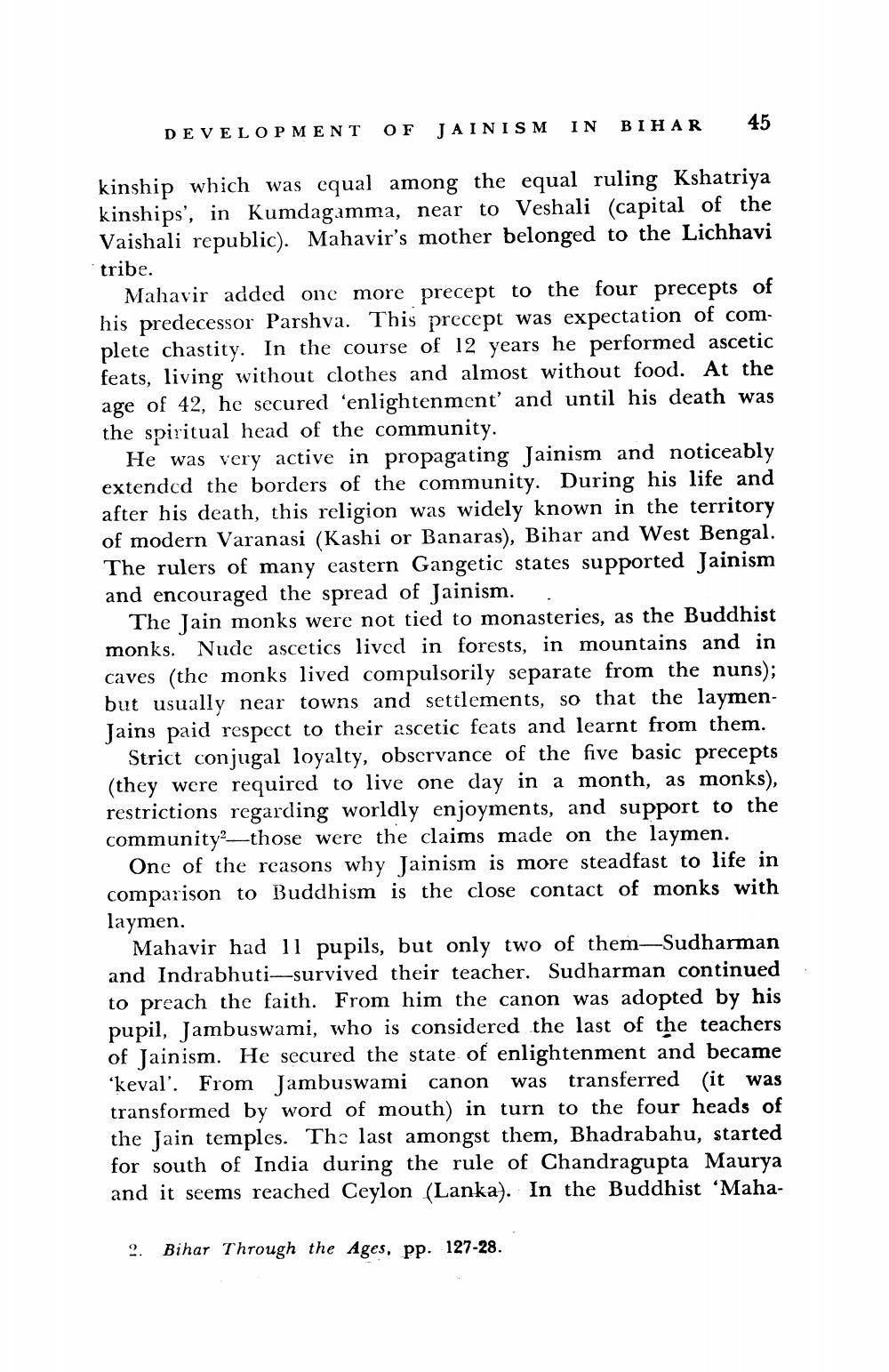________________
DEVELOPMENT OF JAINISM IN BIHAR
45
kinship which was equal among the equal ruling Kshatriya kinships', in Kumdagamma, near to Veshali (capital of the Vaishali republic). Mahavir's mother belonged to the Lichhavi tribe.
Mahavir added one more precept to the four precepts of his predecessor Parshva. This precept was expectation of complete chastity. In the course of 12 years he performed ascetic feats, living without clothes and almost without food. At the age of 42, he secured 'enlightenment and until his death was the spiritual head of the community.
He was very active in propagating Jainism and noticeably extended the borders of the community. During his life and after his death, this religion was widely known in the territory of modern Varanasi (Kashi or Banaras), Bihar and West Bengal. The rulers of many castern Gangetic states supported Jainism and encouraged the spread of Jainism. .
The Jain monks were not tied to monasteries, as the Buddhist monks. Nude ascetics lived in forests, in mountains and in caves (the monks lived compulsorily separate from the nuns); but usually near towns and settlements, so that the laymenJains paid respect to their ascetic feats and learnt from them.
Strict conjugal loyalty, obscrvance of the five basic precepts (they were required to live one day in a month, as monks), restrictions regarding worldly enjoyments, and support to the community—those were the claims made on the laymen.
One of the reasons why Jainism is more steadfast to life in comparison to Buddhism is the close contact of monks with laymen.
Mahavir had 11 pupils, but only two of them—Sudharman and Indrabhuti-survived their teacher. Sudharman continued to preach the faith. From him the canon was adopted by his pupil, Jambuswami, who is considered the last of the teachers of Jainism. He secured the state of enlightenment and became *keval'. From Jambuswami canon was transferred (it was transformed by word of mouth) in turn to the four heads of the Jain temples. The last amongst them, Bhadrabahu, started for south of India during the rule of Chandragupta Maurya and it seems reached Ceylon (Lanka). In the Buddhist ‘Maha
2. Bihar Through the Ages, pp. 127-28.




